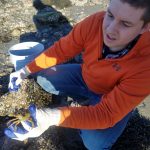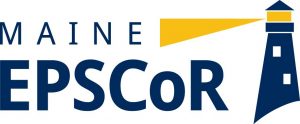Expedition 4: Maine Coast
What do green crabs, ducks, and parasites have in common? How do scientists make sure the data they collect is accurate? What is an invasive species, and how can they be identified?
Beginning the week of April 23, 2018, University of Maine Cooperative Extension 4-H invited K-12 students from Maine and beyond to explore the science of tracking invasive species with its Follow a Researcher® program.
Videos that align with the Next Generation Science Standards Practice introduced UMaine graduate student Tyler Van Kirk and his research on green crabs (Carcinus maenas), an invasive species found along the coast of Maine. Students and educators followed his data collection trips in real-time with an online map and tried an experiential learning activity that shows why data collection methods matter.
Learn More About Expedition 4
 Thank you, Tyler!
Thank you, Tyler!
June 4th, 2018
Dear Tyler,
Thank you for being our researcher this spring. We liked following you because Green Crabs are very interesting. You inspired us to search for crabs while we were on our field trip to Sears Island. Some kids found Green Crabs! It was fun! You also inspired us to become scientists. As engineers, we designed some crab traps. We discovered places crabs are located and brainstormed how to best capture them. Some of our plans are very creative. Good luck with your research.
Your friends, CCes grade 4
This work, part of SEANET’s ongoing aquaculture research, is funded by the National Science Foundation and Maine EPSCoR at the University of Maine. EPSCoR, the Established Program to Stimulate Competitive Research, is a federal program directed at states that have historically received smaller portions of federal research and development funding. EPSCoR develops partnerships between higher education institutions, industry, government, and others to effect lasting improvements in research capacity, innovation, and economic development. For more information, please visit umaine.edu/epscor.




